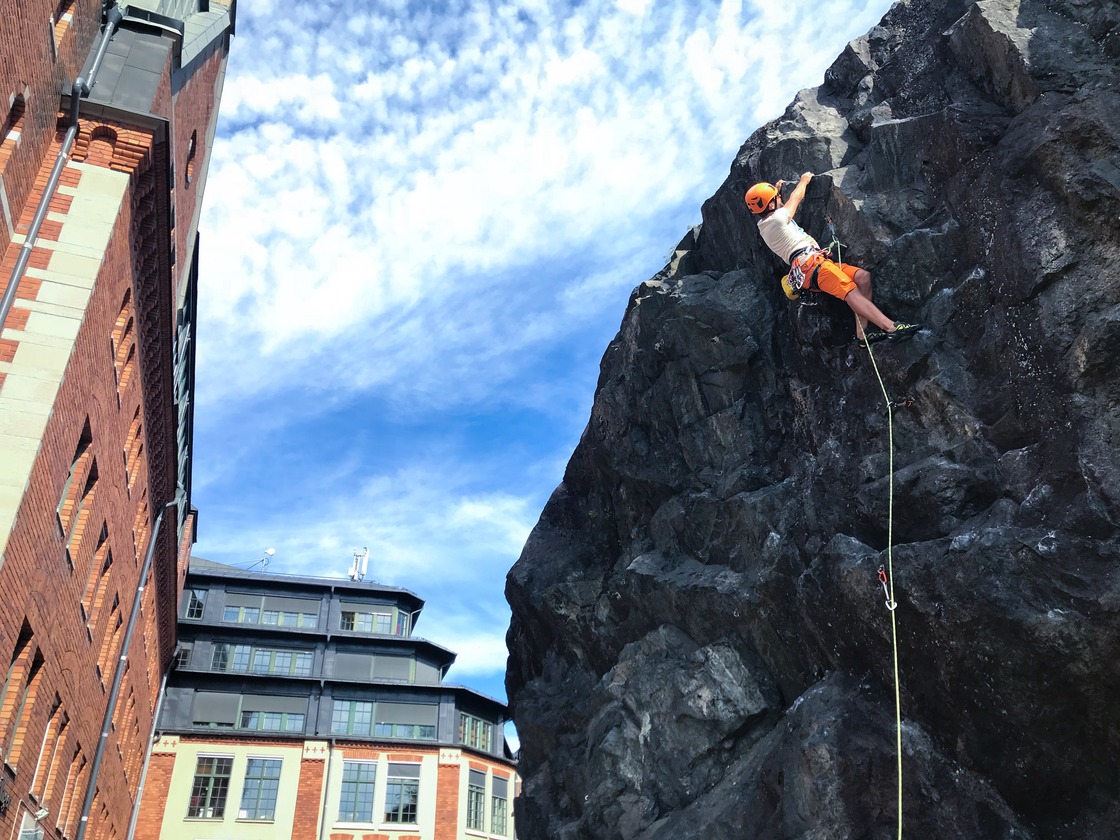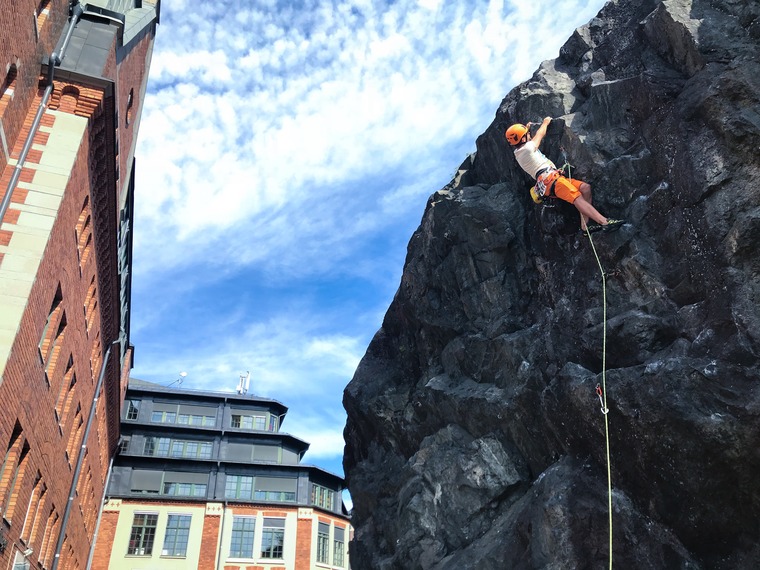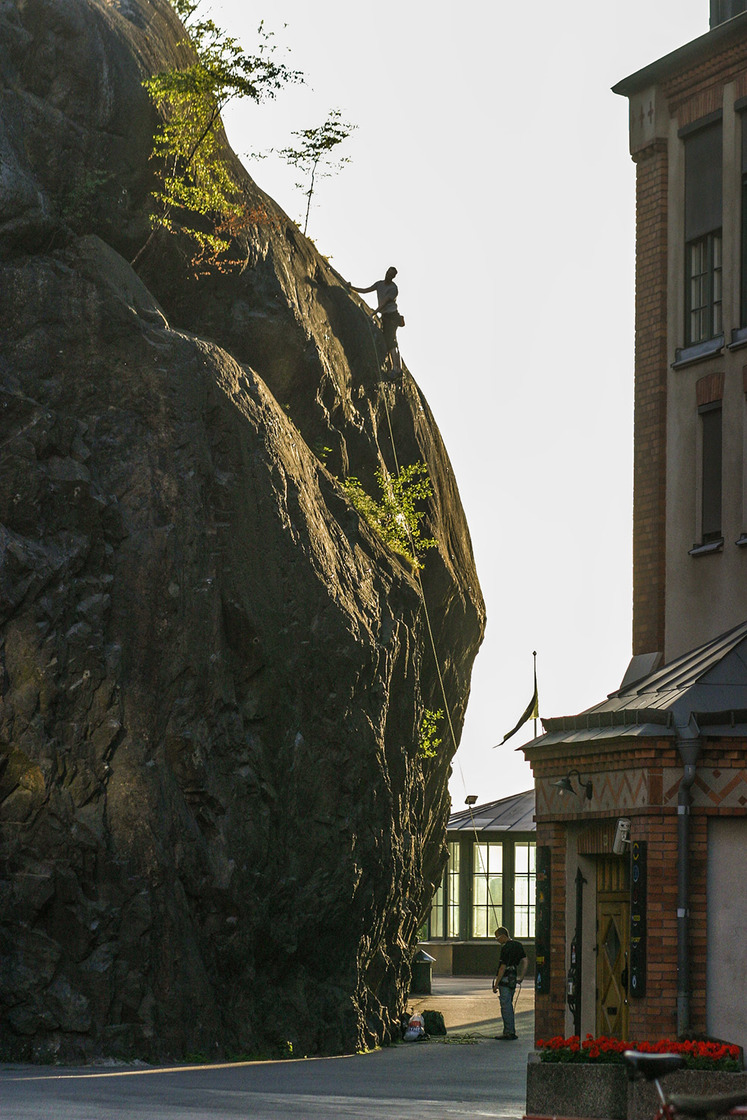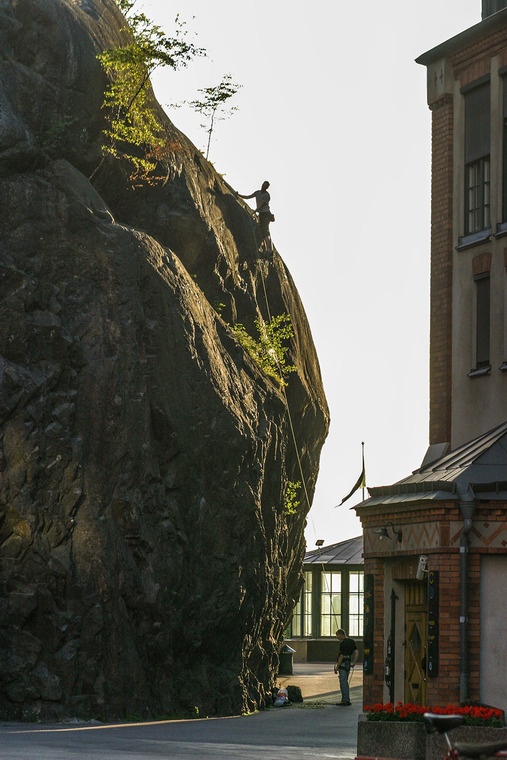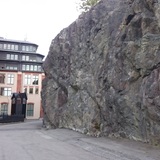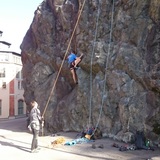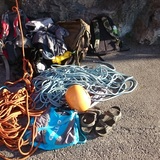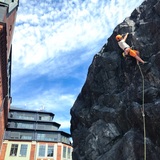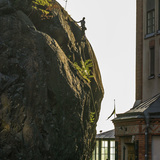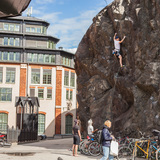Urban climbing with an industrial touch at Södermalm in Stockholm. This crag is calmly suited in the backyard of the famous old brewery named Münchenbryggeriet. It is a popular spot for beginners because it offers many easier sports climbs. The overall quality is compact and slippery. It's not a very beautiful piece of rock, but considering its central location and accessibility it's worth a visit or two if you hang around nearby.
The main part of the wall is vertical or slightly overhanging and formed by rock blasting. The upper left part of the main wall offers some slab sections on solid and natural rock. The routes on the left parts 6a-6b:s offer probably the best climbing on the wall. The easier 5a-6a:s at the right side of the main wall offers some abstract climbing with negatively shaped holds that might be hard to understand if you are a less experienced climber, hence making climbing more difficult than expected. The harder 7b-8a:s are generally overhanging and crimpy.
The main wall is in good condition and generally well equipped although it is a bit far between the bolts at the beginning of the routes sometimes. Clipstick is recommended if climbing near your limit. The routes on the main wall are between 9-20 meters high. The right wall is only around 7 meters high, and moss grows here and there. It also suffers a bit from a lack of decent anchors.
Münchenbryggeriet is north-facing, so it's cool and nice on hot summer days, and in the evening you might catch a very beautiful sunset. The cliff doesn't dry fast, but during the summer it is usually dry the day after some rainfall.
It's difficult to access the anchors from above, however, the anchor on Längsta leden is accessible by foot from above. From the anchor on Längsta leden, you can reach some anchors on other routes as well.
